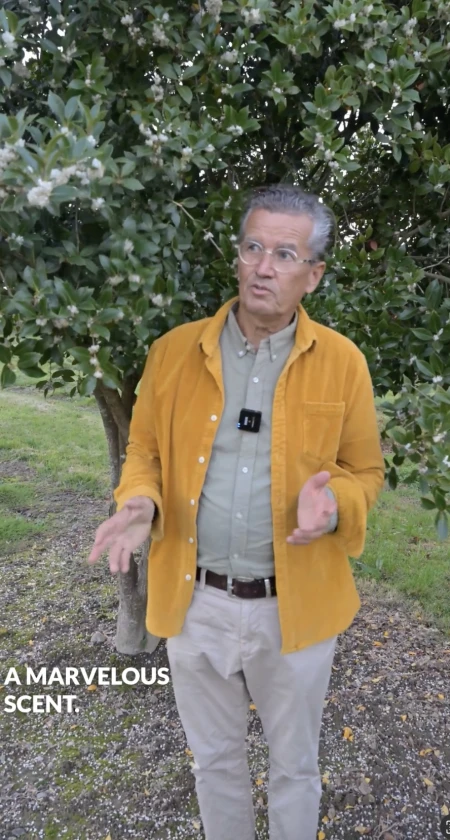
Some plants don’t impress with striking flowers or extravagant growth habits – instead, they captivate with something unseen yet unmistakable: their scent. Osmanthus heterophyllus, also known as the holly olive, is one such plant. Its intoxicating fragrance spreads—usually from October to December—up to 50 meters, creating a unique atmosphere. On warmer days, the scent is even more intense and lingers well into cool evenings.
The Osmanthus genus includes several species, all known for their intensely fragrant blooms. What makes them special? Some flower just when most other plants have long gone dormant.
* Osmanthus fragrans – Typically blooms in late summer and early autumn. In warmer climates, it can flower multiple times a year, but in Germany, only in protected locations.
* Osmanthus heterophyllus – Blooms from October to December and is relatively winter-hardy in temperate regions like Hamburg.
* Osmanthus delavayi – Blooms in spring (March to May) and is often mistakenly thought to be a winter bloomer.
No matter the species, Osmanthus brings unexpected fragrance to the garden during the darker months.
Beyond its captivating scent, Osmanthus heterophyllus stands out with its shiny, vibrant leaves. It’s not just a delight for the senses but also an exceptionally low-maintenance and resilient plant. Whether grown in a container or planted in the ground, it thrives in temperate climates and is well-suited to regions like Hamburg. In particularly harsh winters or exposed locations, a light winter covering can be beneficial.
It’s not just humans who appreciate its incredible fragrance—bees find a valuable food source when daytime temperatures are mild. While most plants have long finished blooming, Osmanthus heterophyllus opens its delicate flowers, infusing the garden with a subtly Mediterranean ambiance.
We use cookies to personalise content and to analyse our traffic. You consent to our cookies if you continue to use our website.